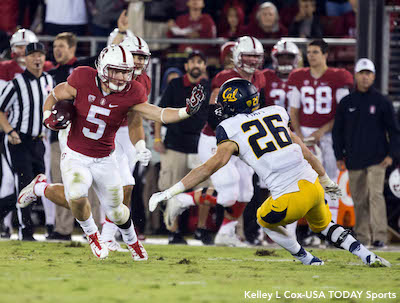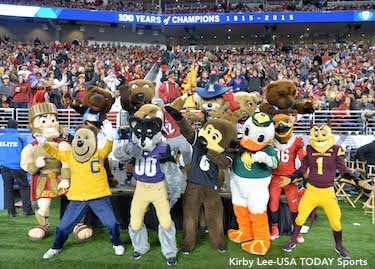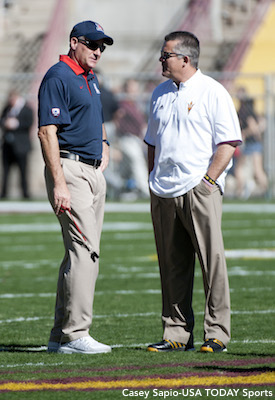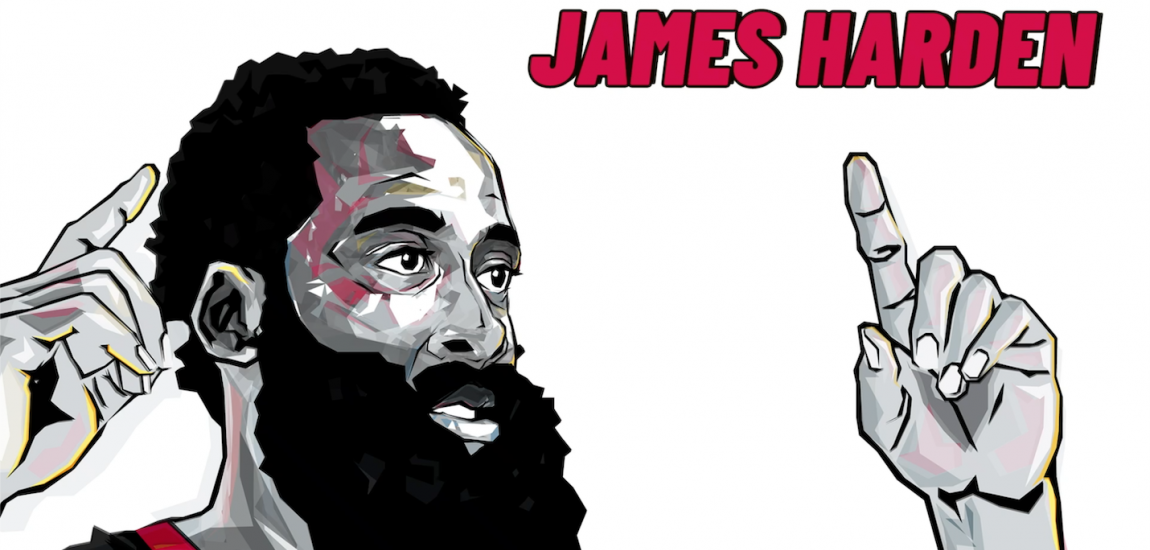We already know who's the biggest loser in the second edition of the College Football Playoff. Without a team in the four-team field and with just one among the 12 New Year's Six bowl entrants, the Pac-12 is the clear also-ran among the Power 5 conferences.
The Pac-12 is about to be dealt another bitter loss Saturday night, when Stanford's Christian McCaffrey is expected to finish second to Alabama's Derrick Henry in this year's Heisman voting. McCaffrey would become the fourth Stanford player to finish second in the last seven years, joining Toby Gerhart (2009) and Andrew Luck (2010, 2011).
The losses are piling up off the field, too. While the Big Ten and SEC are expected to generate in excess of $35 per school this academic year, the Pac-12 will be behind by at least $10 million per school, falling further behind in college sports' ultimate arms race.
Losing the revenue war has immediate and harmful results. Several Pac-12 coaches flirted with jobs in other Power 5 conferences, including Arizona's Rich Rodriguez and Cal's Sonny Dykes (and possibly also Arizona State's Todd Graham and Utah's Kyle Wittingham). Schools in the Big Ten and SEC, armed with superior buying power, have not been shy to lavish huge salaries to poach the best coaches on the market.
When Larry Scott took over as commissioner in 2009, he was supposed to usher the Pac-12 into the 21st century. While he's improved the revenue stream for the conference with new TV contracts and the launching of the Pac-12 Network, his stewardship of the conference has not been an unqualified success.
Scott's tenure began with lots of ambitious proclamations and bravado, but ultimately his execution has fallen far short. He boldly went after Texas and Oklahoma in the hopes of creating a super conference, but ended up with Colorado and Utah instead. The Pac-12 Network, the first wholly-owned conference TV network, has been, frankly, a flop.
The failure of the Pac-12 Network has been a big part of the conference's revenue shortfalls. Whereas the Big Ten Network (launched in 2007) and SEC Network (2014) reach over 60 million households each, the Pac-12 Network, in its fourth season, is reaching merely 12 million households. As a result, while Big Ten and SEC schools are each getting $7.5 million or more annually from their conference networks, the Pac-12 schools are each getting only about $1 million annually.

The Pac-12 Network's business model clearly isn't working. Whereas the BTN and SEC Network are partnered with Fox and ESPN, respectively, the Pac-12 Network is wholly-owned by the conference and its schools, with the goal of being able to have 100 percent control over its programming.
But that setup limits the attractiveness of its contents to advertisers. Worse, it gives the conference little leverage in negotiating for carriage with cable/satellite providers. Four years into its existence, the Pac-12 Network is still not on DirecTV -- the biggest provider for sports content at commercial properties -- after the latest talk with DirecTV's new parent company AT&T collapsed in September.
The problem with the Pac-12 Network is that it's run more like a cause than a business. It averages over 850 live events per year, dwarfing that of the BTN (500) and SEC Network (450). But most of these events are Olympic sports and/or women's sports, which do not lead to robust ratings or interest advertisers. Some of these events are even being carried at the expense of men's basketball games, as has been the case this season.

While the conference rejected AT&T's overture to acquire a stake in the network, there are now grumblings among the conference's athletic directors. At least for some of them, patience is running thin.
"I'm a big fan of the networks, but we all had projected that we’d be seeing a larger annual payday than we're currently seeing," Washington State AD Bill Moos told Sports Business Journal. "We've seen some increases, but it’s not where we hoped it would be.
"Maybe we need to consider cutting back (on live programming). Doing 850 events … that's not cheap."
Pac-12's TV package is also hurting its football teams on the field. Stanford twice appeared on the Pac-12 Network -- largely unseen outside of the conference's footprint -- and had six other games kicking off after 10 p.m. ET, so few East Coast viewers saw more than half of its games in their entirety. By extension that hurt McCaffrey's Heisman chances, too. Until the regular-season finale against Notre Dame and conference title game against USC, most Heisman voters rarely saw him play live.

There is little chance that the conference can fix this predicament anytime soon -- at least not until next August, before the start of another football season. And it doesn't help that Scott recently decided that the one place the Pac-12 can expand its reach is China, where the conference staged a basketball game between Washington and Texas in November.
Here's a secret: Among the many things 1.3 billion Chinese couldn't care less about is Pac-12 basketball. Or Pac-12 anything for that matter.
Heisman Forecast
For the first time since 2009, a running back will take home the Heisman Trophy. And just like the 2009 winner Mark Ingram, he will be coming from Alabama:
1. Derrick Henry (RB, Alabama), 2. Christian McCaffrey (RB, Stanford), 3. Deshaun Watson (QB, Clemson), 4. Baker Mayfield (QB, Oklahoma), 5. Keenan Reynolds (QB, Navy).
-- Samuel Chi is the managing editor of RealClearSports.com and proprietor of College Football Exchange. Follow him on Twitter at @ThePlayoffGuru.






